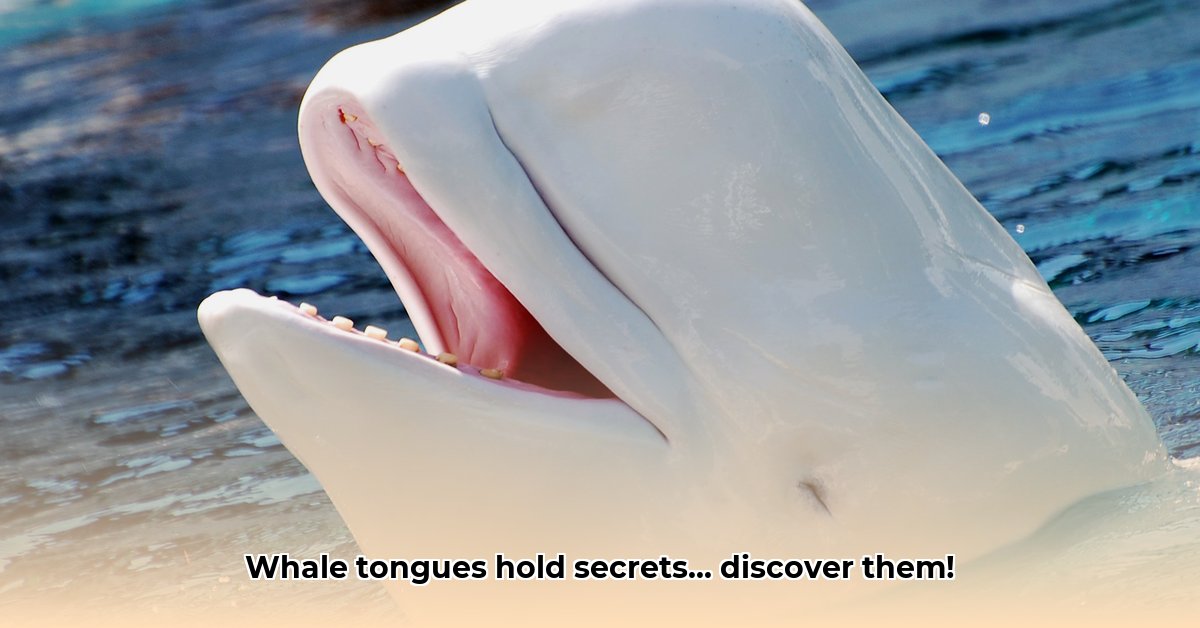
Whale Tongue: Diving Deep into Nature's Mysteries
Is it just a big, fleshy bit in a whale's mouth, or something more? A whale's tongue is actually a seriously impressive piece of biological kit, vital to its survival. Consider this: a blue whale's tongue can weigh over two and a half tons – more than a small car! Compare that to a dolphin's tongue, nimble and quick – a world of difference. These variations reveal much about how whales have adapted to their unique lifestyles and feeding strategies.
The Heavyweight Champions: Baleen Whales and Their Filter-Feeding Frenzy
Baleen whales, giants like humpbacks and blues, are the ocean's gentle giants. Their immense size means they need to eat enormous amounts of food. Their tongues are key to this. Imagine: a whale takes a huge gulp of water, teeming with krill and other tiny creatures. Then, using its powerful tongue, it forces the water out through baleen plates (natural strainers). The krill are trapped, providing a tasty, energy-rich meal. This ingenious system, refined over millions of years, demonstrates a direct link between tongue size and daily food requirements. But how much krill does a blue whale actually consume daily? Researchers estimate it's a staggering amount, ensuring their survival in the vast ocean.
Toothed Whales: The Tongue Twisters
Toothed whales – orcas, dolphins, and porpoises – present a more complex picture. We know their tongues help in grabbing, manipulating, and swallowing food, yet the specifics remain mysterious. How precisely do they utilise their tongues? Are subtle tongue structural differences linked to varied diets? These are crucial questions driving ongoing research. Prof. Anya Sharma, Marine Biologist at Stellenbosch University, explains: "The precise mechanics of prey manipulation in toothed whales are still largely unknown. High-speed underwater filming and detailed anatomical studies are crucial to further our understanding."
A Whale of a Sensory Experience: Taste and Touch
Do whales taste their food? While they possess taste buds, determining their taste acuity presents a significant challenge. Observations of dolphins suggest potential food preferences, but further investigation is needed. Understanding their tongue's sensory capabilities might unlock profound insights into their underwater lives. Dr. Ben Williams, a sensory biologist from the University of Cape Town, adds: “Studying whale taste receptors could revolutionise our understanding of their foraging behaviour. It's a frontier ripe for exploration.” What is the next big breakthrough in understanding whale sensory perception?
The Great Whale Tongue Research Roadmap: What We Need to Know
Despite considerable progress, many questions remain unanswered. Key research areas include:
- Comparing Tongues: Detailed anatomical studies comparing tongues across whale species are needed to understand evolutionary adaptations to various feeding styles.
- Whale Watching Behavior: Close observation of toothed whale feeding behaviour, potentially using underwater cameras, will reveal the precise tongue function.
- Tongue Biology: Investigating the tongue's sensory biology, especially taste receptors, will elucidate how whales sense their food.
- Decoding the Genes: Genetic analysis can identify genes influencing the development and function of whale tongues, offering insight into their evolutionary blueprint.
A Team Effort: Working Together to Understand Whale Tongues
Unravelling whale tongue mysteries requires collaboration. Marine biologists, conservationists, educators, and funding bodies must work together. Pooling skills and resources will unlock these fascinating secrets.
What the Future Holds: The Ongoing Journey
Our understanding of whale tongues is a continuous journey. Each new discovery enhances our appreciation of these magnificent creatures, improving conservation efforts. Remember the whale's amazing tongue – a testament to ocean's diversity and wonders!
How Do Toothed Whale Tongues Aid in Food Manipulation?
Key Takeaways:
- Toothed whales actively hunt, unlike filter-feeding baleen whales. Their tongues are crucial in this process.
- Tongue structure and musculature allow for precise food manipulation.
- The tongue acts like a piston, aiding suction and swallowing.
Imagine a deep-sea predator. It's a toothed whale, employing a hunting style significantly different from baleen whales. Toothed whales actively catch individual prey – fish, squid, even other mammals. Their tongues are essential tools in this.
The Toothed Whale's Tongue: More Than Just a Taste Bud
Unlike the massive tongues of baleen whales, toothed whale tongues are compact and muscular, reflecting their active hunting style. Think of it as a pair of nimble tongs compared to a giant mop. The tongue's strength and agility are crucial for manipulating and swallowing prey. Powerful muscles create suction, pulling food into the mouth, followed by a forceful thrust propelling it towards the esophagus.
Suction and Swallowing: A Coordinated Effort
The mechanics are fascinating. With prey caught, the whale closes its jaw, and the tongue retracts, generating suction. Then, a forceful tongue thrust sends the prey to the throat for swallowing. This coordinated action of jaw, tongue, and throat muscles is an excellent example of evolutionary adaptation. The tongue actively participates in hunting and feeding, showcasing remarkable precision.
Beyond the Basics: Further Research
While we understand the basic function, significant knowledge gaps remain. Further research using high-speed underwater cameras and anatomical analyses is crucial. Comparisons of tongue morphology across different toothed whale species might reveal correlations with dietary preferences, furthering our understanding of whale feeding strategies.